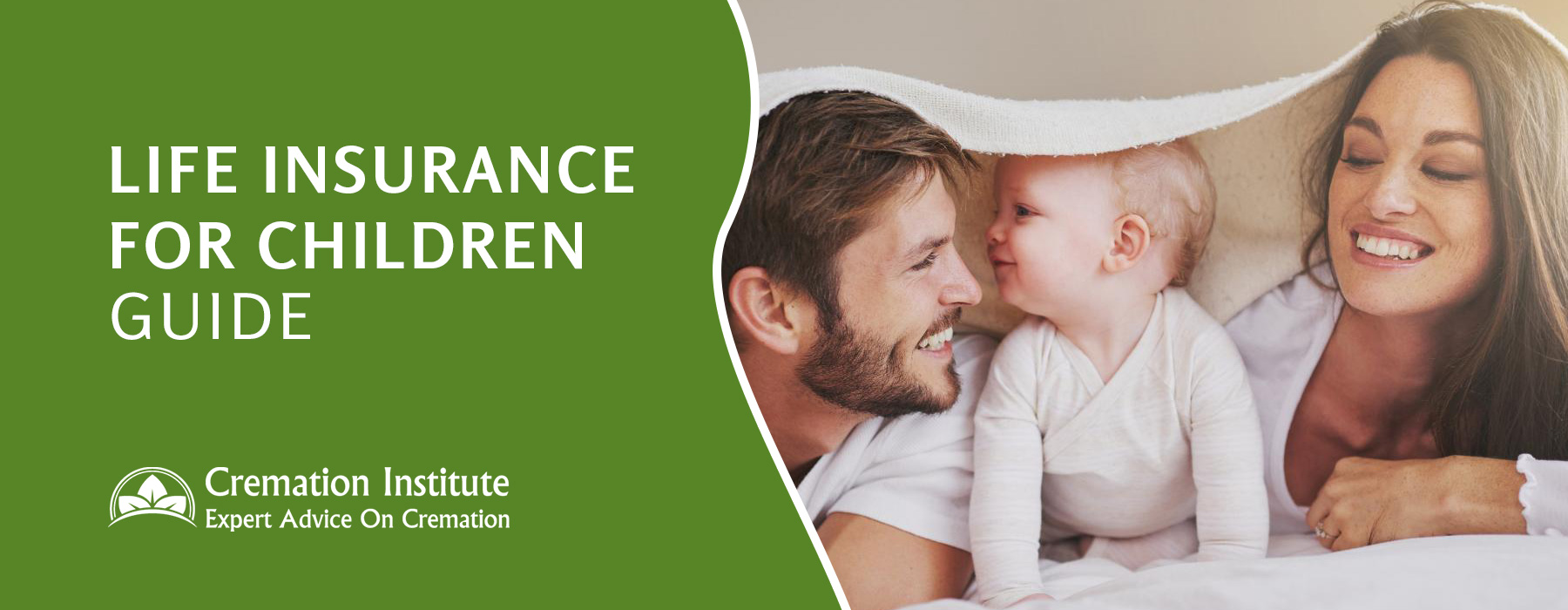Life Insurance For Children Review: Is It Worth It & What Should You Pay?


Written by Kim Pinnelli: Life Insurance Advisor
 Reviewed by Adam Binstock On September 13, 2020
Reviewed by Adam Binstock On September 13, 2020
Article Highlights
Is It Worth It? How It Works Costs & Premiums Best Children’s Policies Common Questions How To Buy A Policy Other Alternatives Should You Buy It?I get it, it’s probably the worst thought any parent could think of.
But putting the morbid talk aside, is life insurance for children a good idea?
Actually there are a number of good reasons to take out a policy for your kids.
For one thing, when you set your child up with a policy at a young age, they are guaranteed life insurance when they are an adult.
In this article, I’ll explain everything you need to know about children’s life insurance and whether it’s a good idea for your situation.
Is It Worth It?
No parent ever wants to think about the possibility of burying their child, but having a policy might provide peace of mind.
You don’t buy life insurance because you think your child is going to die. You buy it for financial security.
Sets them up for life
When you buy life insurance for children, you can relax knowing you have coverage should the worst happen. You also have peace of mind knowing your child is set for life.
When they get older, their policy will remain in place. It’s easier for children who already have life insurance to keep it going or convert it to another policy.
If your child happens to fall ill or become chronically disabled as an adult, life insurance may be unaffordable or difficult to obtain, but if they have insurance already, it’s not an issue.
Yes, life insurance can get expensive, but if you weigh the pros and cons and compare it to the alternatives, not only will you feel good about it but you may even find an affordable option.
Why Life Insurance for Children
Most parents purchase life insurance for children for three main reasons:
Lifetime Insurability
To give their child insurability for his/her lifetime.
If you purchase whole life insurance and continue to pay the premiums, it will remain in place for your child’s lifetime.
You don’t have to worry about them falling ill or becoming disabled and not qualifying for insurance.
Cash Value
The cash value may help cover large future costs, such as college or buying a home.
The earnings grow tax-deferred and the policyholder only pays taxes on any amount withdrawn that is higher than the contributions.
Peace of mind
Insurance helps ease your mind.
Whether the worst happens and you have to cash in the life insurance or you need the cash balance in an emergency, having that peace of mind is worth its weight in gold.
The Downsides
High Fees
Life insurance fees are lumped into your premiums so you don’t even realize you’re paying them sometimes.
When you cash in your policy’s cash value, you may pay a fee to access the funds. Make sure you know the cost before accepting the policy.
Low Coverage
The guaranteed insurability doesn’t always work in a child’s favor. Unless you purchase a large policy, your child’s future insurability is based on a multiple of the coverage you bought.
It’s often not enough to cover your adult children or at least in the amount they desire.
Small Odds
The odds of a child dying are small.
You pay a large amount of money for these odds when you could instead stash it away in an emergency fund or any other low-cost investment should the worst occur.
Choosing another investment also doesn’t limit its use to a person dying; you can use the funds for anything.
How It Works
Children’s life insurance works pretty much the same way as life insurance for an adult. You choose the type of policy, coverage amount, and how much you’ll invest in the cash portion.
Types of Policies
Like adult life insurance, you will be able to purchase different types of policies, these policies include:
Whole life insurance
You pay the premiums throughout your child’s life and if they choose to continue with it when they become an adult, you can transfer it to them.
Whole life policies accrue a cash balance that you or your child may use to pay for college or buy a home.
Your premiums cover both the death benefit and the cash value portion of the life insurance policy.
Term life insurance
This policy provides coverage for a specific term, alleviating the stress on parents should the worst occur.
Term life insurance premiums cost less, but the policy doesn’t accrue a cash value, you pay only for the death benefit.
The policy expires upon maturity, but many offer the chance to renew it.
Rider on your life insurance
Many adult life insurance policies offer a child rider, which provides a smaller amount of coverage for children should the worst occur.
This is in addition to your policy, but it provides many of the same benefits.
Coverage
Every company offers different policies, but in general, you can buy coverage between $5,000 and $50,000 for children. The coverage amount refers to the amount you’d receive if your child passes.
If you buy a whole life insurance policy, the cash value can grow according to the terms of the policy.
Each policy has a different cash value. Some have a guaranteed rate of return and others vary based on the market’s performance.
You decide how you want the value to grow and what risks you’re willing to take.
Medical exams
Some insurance companies require a medical exam, but usually it’s not required.
While it may seem odd that a child would need a medical exam to be approved, life insurance companies need to know that there aren’t any congenital or life-threatening illnesses occurring.
Most companies only require a medical questionnaire with a few questions, but it’s not unheard of to need an exam.
Costs & Premiums
Unlike adult life insurance, children have the same premiums regardless of gender. The premiums change based on age at the time you buy the policy.
Here are some sample rates:
- Ages 0 – 4 = $10,000 coverage for $4/month and $50,000 coverage for $16/month
- Ages 5 – 9 = $10,000 coverage for $4.80/month and $50,000 coverage for $20/month
- Ages 10 – 14 = $10,000 coverage for $5.50/month and $50,000 coverage for $23.50/month
- Ages 15 – 17 = $10,000 coverage for $6.90/month and $50,000 coverage for $30.50/month
Best Children’s Policies
Mutual Of Omaha
Mutual of Omaha is a great option for children’s life insurance.
Just like their adult life insurance options, children don’t need to go through a medical exam and parents can buy coverage up to $50,000.
You can buy insurance for children as young as 2-weeks old and your children can convert the policy to a permanent (cash-value policy) when the policy matures if they choose to do so.
Gerber Life
Gerber Life offers a couple of plans for children’s life insurance. The standard policy is a whole life policy that doubles in value when your child turns 18.
For example, if you buy a $50,000 policy for your child today, it would be a $100,000 policy when they become an adult.
Gerber also says that children can buy more coverage during adulthood without proving insurability if you insure them now.
Life College Plan
Gerber also offers a Life College Plan. While it’s called a ‘college plan’ the policy grows a cash value at a guaranteed rate for anything in your child’s future.
Unlike a 529 savings plan, your child may use the funds for anything they need. This offers great peace of mind knowing you’re setting your child up for financial security.
State Farm
State Farm offers ‘family plans’ which boil down to adult life insurance with a child rider. The term rider can be worth up to $20,000 in coverage.
You can insure all children, including future children and automatic coverage will begin when your baby is 15 days old.
Your child can keep the policy as is, extend the term or convert it to a permanent policy upon maturity.
Protective
Protective is one of the few companies that allow you to insure children from the day they’re born up until they turn 18.
Protective offers a whole life insurance policy with fixed premiums that build a cash value. You can buy coverage from $10,000 – $20,000 for your children.
Transamerica
Transamerica offers policies for children between the ages of 0 and 17. They only offer whole life policies, so the insurance never expires and provides coverage between $1,000 and $50,000.
Transamerica does not offer an online application process so you’ll have to go through an agent to secure life insurance for your children.
Foresters Financial
Foresters Financial offers large coverage amounts for children. Parents may buy up to $75,000 in coverage, whereas most companies allow up to $50,000.
They offer a whole life insurance option which builds a cash value and has fixed premiums for the life of the policy.
Globe Life
If you’re looking for low premiums, check out Globe Life as they offer some of the best rates.
Like Protective, Globe Life is unique in the opportunities it offers to insure your child even after they become an adult (up to age 24).
They also offer only whole life policies and they accumulate a cash value throughout your child’s life. Parents may buy policies ranging from $5,000 – $30,000 in coverage.
Common Questions
What’s the age limit for child insurance?
Each company has a different age limit on children’s life insurance.
On average, it’s 2-weeks to 14-years, but some companies, like Protective and Globe Life, allow coverage beyond 14 and up to 24-years old.
Who is eligible to buy child insurance?
Since you don’t need consent to buy your life insurance for children, only those with a familial relationship may purchase it. This includes:
- Parents (biological and adopted)
- Step-parents
- Grandparents
- Legal guardians
What if your child has pre-existing conditions?
Just like adult life insurance, if there are pre-existing conditions, coverage may not be an option but it completely depends on the company and the severity of the condition.
Don’t give up just because your child has a condition – shop around to find a company that offers guaranteed coverage.
Is there a waiting period for coverage?
No policy has a waiting period when it comes to life insurance for children except if death by suicide. Most policies have a 2-year waiting period for suicidal deaths.
How To Buy A Policy
It’s easier than ever to buy a life insurance policy for your child. Most companies will process your application 100% online.
Sure, you could do the paper version if you want, and a few companies (like Transamerica) only offer policies through an agent, but overall the process is simple.
Step 1
Provide information about your child
- Age
- Gender
- Date of birth
- Medical information
Step 2
Provide information about yourself
- Name
- Address
- Contact information
- Relationship to the child
- Gender
- Date of birth
- Social Security number
Step 3
Send in your application with payment, choose your beneficiaries and you’ll have your policy usually within a couple of weeks.
Other Alternatives
If buying life insurance for children doesn’t feel right, consider your alternatives:
529 Plan
If you’re worried about paying for college, open a 529 plan, and get tax benefits while saving for your child’s college education.
If your child doesn’t go to college, you may use the funds for trade school, community college, or even K-12 education for other children.
IRA Savings Account
Teach your child the importance of saving for long-term occurrences, such as retirement with an IRA savings account.
As soon as your child earns an income, open an IRA, and help them contribute to it, you can even make matching contributions like an employer.
Custodial Account
You can open a savings account in your child’s name (with you as the custodian) and teach them the value of saving from a young age.
Should You Buy It?
Life insurance for children is the most debated form of life insurance today and whether you should buy it or not is a personal decision.
If you believe in life insurance and want to set your child up for financial success in adulthood, a children’s policy is a great way to start.
Just make sure you understand the tax implications and the options your child has when they reach maturity.
The right policy for your child may not be right for someone else’s, which is why it’s important to shop around and understand your options.


